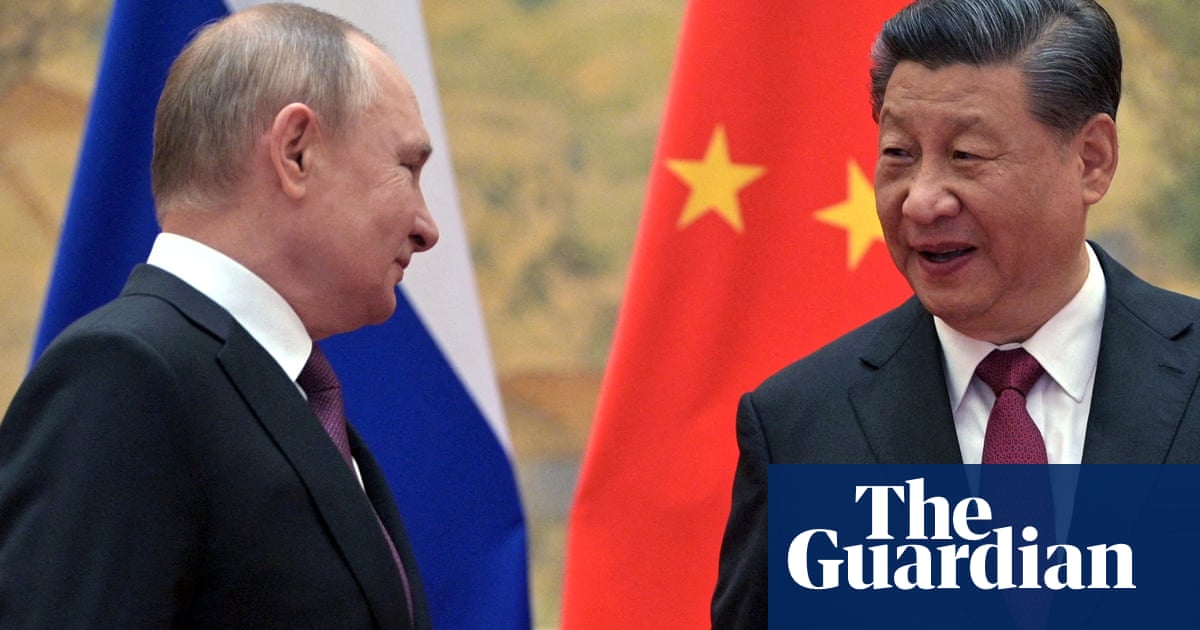Close ties allow Russian propaganda to spread swiftly through China, report claims
Close ties between Russian and Chinese state media along with strict government control of information have allowed Russian propaganda to spread swiftly throughout China, “nazifying” Ukraine in the eyes of some Chinese citizens and fostering pro-Russian sentiment, a new report has claimed.
Taiwan-based cyber monitoring group, Doublethink Labs, tracked state and social media from mid-February until late March. It said Chinese sources were amplifying Russian disinformation about Ukraine and linking Ukrainian nazism to the Hong Kong protests to encourage solidarity between Russian and Chinese people against “foreign forces interfering with internal affairs”.
Russian authorities had pushed a narrative of nazism in Ukraine as a key justification for its invasion of the country, as well as the threat posed by a Nato expansion – narratives that gained traction in China where anti-US sentiment runs high.
China has claimed a neutral stance on the war, but has refused to label Russia’s act as an “invasion”. Just weeks before the invasion, Xi Jinping and Vladimir Putin signed a “limitless” partnership. Analysts say the war has left China in a difficult position, between supporting its key ally Russia, and avoiding the punitive sanctions being imposed by other nations. Instead, it has cast events as a conflict created and driven by the US and Nato, and presented itself as a potential mediator.
The Doublethink Labs report pointed to content sharing agreements between the two countries’ state media, decisions by Chinese censors, influential social media accounts and government directives regarding coverage, as all contributed to driving public support for Russia’s attack, despite the Chinese government’s nominal stance of neutrality.
Prior to the invasion, there was little discussion of Russia’s claimed need to “denazify Ukraine” until hostilities broke out, the report said. But the speed with which disinformation spread revealed, “the ease with which Sino-Russian state media cooperation can sow disinformation by citing each other as sources and expanding on each other’s angles”.
“The tendency is clear: one side creates and the other expands, distorting information in a way that is beneficial to both countries.”
Disinformation was found across domestic Chinese media, Chinese-language Russian media, and Chinese language accounts in western social media platforms that targeted the broader Chinese diaspora and people in Taiwan.
In late February, as Russian troops were sent into Donetsk and Luhansk, Chinese media was issued a directive to only use official news released from People’s Daily, Xinhua news agency, and China Central Television – state-run mouthpieces which have had content-sharing agreements with Russian state media since as far back as 2015.
Two days later, Russia invaded Ukraine, and China’s media pushed out false stories including Russian claims of Ukrainian soldiers surrendering, and their president, Volodymyr Zelenskiy, fleeing. Other articles promoted fake polls claiming low support among Ukrainians for joining Nato, according to research by the Brookings Institute.
Three days into the war, Weibo accounts and state-linked blogs resurfaced debunked reports from 2019 that had used a photo of a Ukrainian veteran at Hong Kong’s pro-democracy protests as proof the US was funding members of the far-right Azov Battalion to attend the rallies and sow discord. In Taiwan, pro-Beijing social media also latched on to fake Russian news reports in early March of Ukrainian neo-Nazis shooting Chinese citizens and torturing Russian soldiers.
The spread was also influenced by the decisions of censors that blocked Ukraine related content, including posts by a Chinese citizen describing the invasion from inside Odesa, and senior voices urging China to cut ties with Russia. But blocks on the term “Nazi” appeared to have been lifted during the crisis, allowing stories that justified Putin’s actions to appear and be shared on Chinese platforms.
Charlie Smith, cofounder of Greatfire.org, a censorship monitoring site, said “Nazi” had long been identified as a keyword on most censorship lists for Chinese internet companies. “Usually once a word ends up on that list, it very rarely comes off,” he said. “Sometimes what is not being censored can be more telling than what is being censored.”
Chinese authorities have denied spreading disinformation, and foreign ministry spokesperson Wang Wenbin said the accusation was itself an act of disinformation.
But it has also amplified conspiracy theories about claims of US-funded bioweapon labs in Ukraine, which last week expanded to involve claims about Hunter Biden, George Soros, the US Centers for Disease Control and Prevention, and Covid-19.
David Bandurski, analyst and editor of the China Media Project, said China’s state media had been amplifying Russian sources “back to 2021”, framing Russia’s actions as primarily defensive by running Russian reports suggesting Nato was building a presence along the border.
“But pull back from the focus on events in Ukraine and you see that China has also played an active role in manufacturing disinformation to support the basic frames it has amplified about the conflict,” he said, citing as example the bioweapons labs claims.
“The point here is to undermine US credibility over the longer term, and to push for a remaking of the international system. In this endeavour, Russia has been China’s most intimate partner,” said Bandurski.
Additional reporting by Chi Hui Lin











